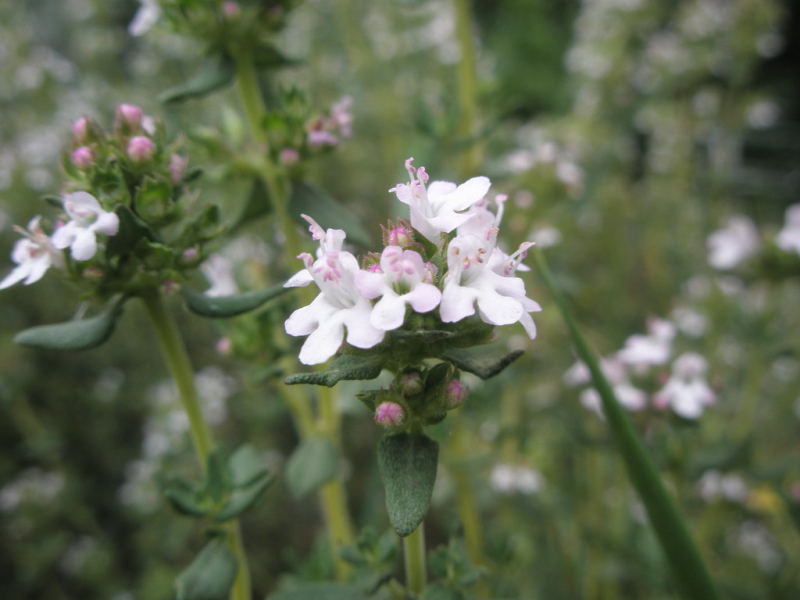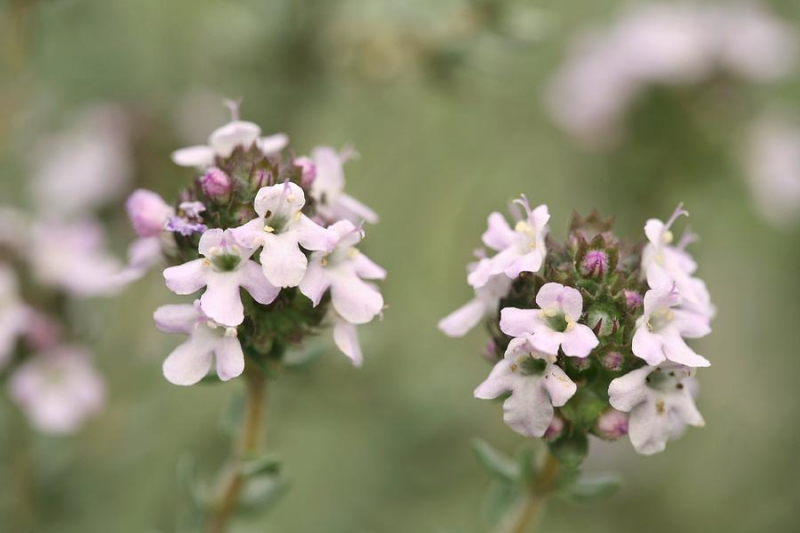Thymus vulgaris

Thymus vulgaris is a woody-based flowering plant of the Lamiaceae family, commonly known as Thyme, originates from Southern Europe and has a worldwide distribution. It prefers well-drained soil and sunny locations. Thyme can withstand both drought and frost. Thyme is also primarily grown today as an ornamental plant and a spice. The plant will bloom with tiny pink or purple flowers clustered in clusters at the ends of the branches in the early summer.
The pollinators, butterflies, and honeybees, are drawn to the flowers of thyme because they have both stamens and pistils, which are reproductive organs. It has small, scented, oval, evergreen leaves that are placed in opposing pairs on the stalk. Additionally, it has a hair-covered slender, grey to the green stem. Thymol, an antimicrobial compound, is present in the oil that is produced from the leaves and even the blossoms. It can reach a height of 15-30 centimeters.
These tiniest flowers can be multiplied through seed, plant cuttings, and roots. Tiny seeds, or fruits of thyme, are widely distributed. In the Mediterranean, it easily spreads onto stony banks, dry walls, dry slopes, rough grassland, wasteland, and forests.











